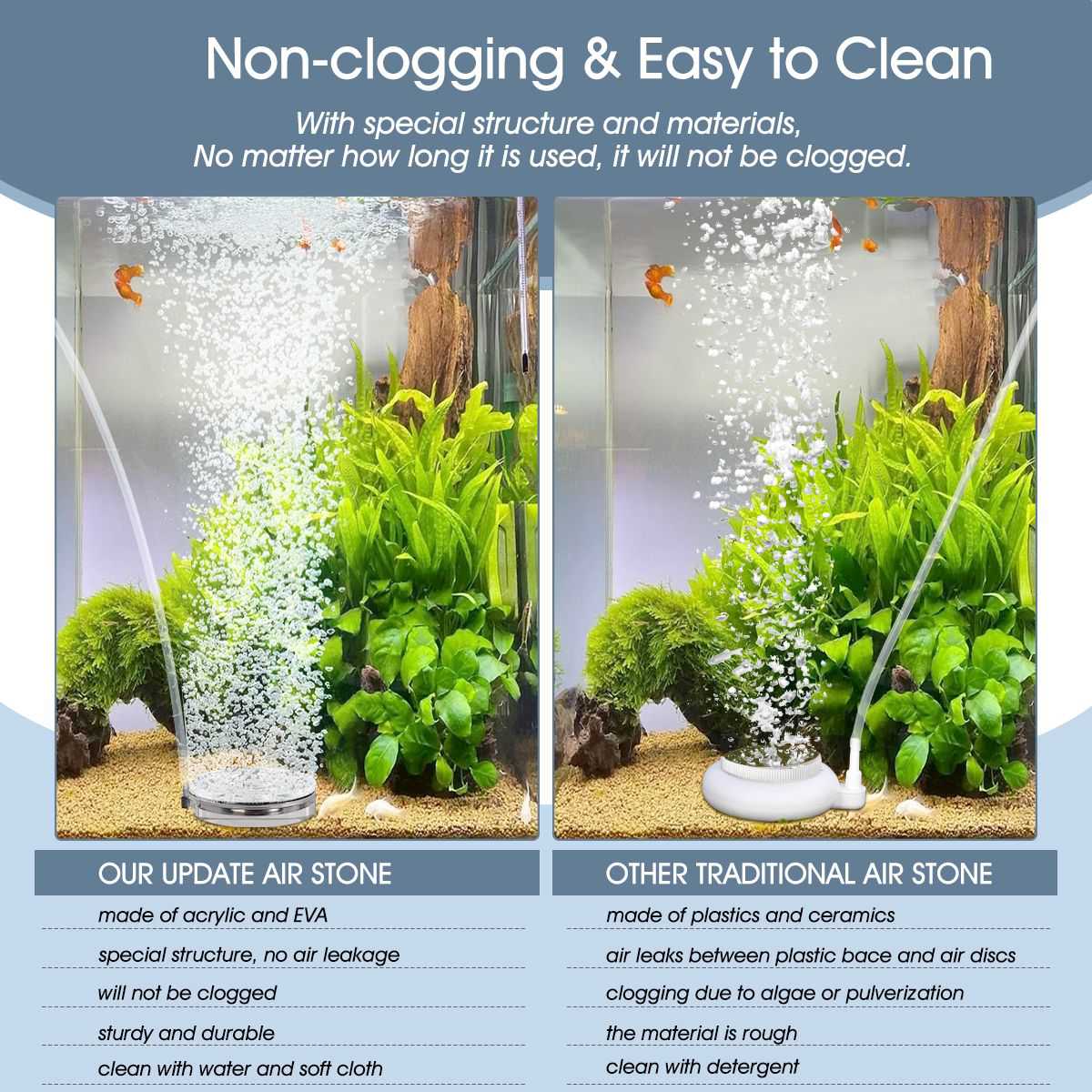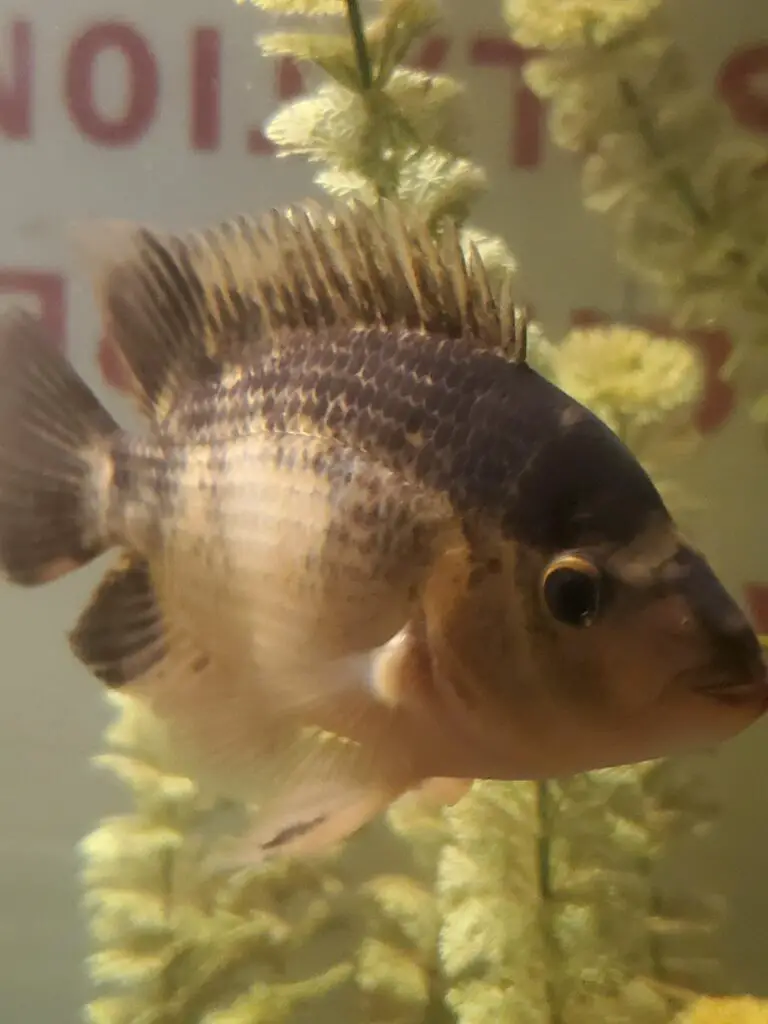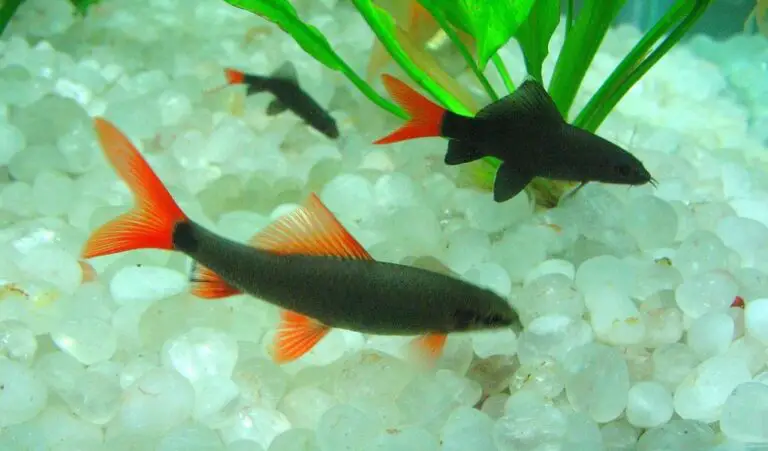How to Clean Aquarium Air Stones?
1. Unplug the air pump and remove the air stone from your aquarium.
2. Rinse it under warm water to remove any dirt, algae or other debris that has accumulated on its surface.
3. To disinfect it, mix a solution of one part bleach to ten parts water in a separate container and soak the stone for 10-15 minutes before rinsing with warm water again until all traces of bleach are gone.
4. If you can’t submerge the entire air stone in this mixture, use an old toothbrush to scrub away any remaining residue on the stones surface only after soaking them first in the bleach solution for at least 5 minutes prior to scrubbing them clean with a brush.
5. Place fresh aquarium water into another bucket and immerse your cleaned airstone inside this new bucket filled with fresh aquarium water for about 15 more minutes before returning it back into your tank’s filter system.
Gather all the necessary supplies: an aquarium air stone, a bucket or container large enough to hold the air stone, vinegar, and water. Fill the container with equal parts of water and vinegar until it is enough to cover your air stone. Soak your air stone in this solution for at least two hours. After two hours remove the aerator from the mixture and rinse it thoroughly under running tap water until all of the residue has been removed from its surface as well as any loose debris that may be present inside its pores or crevices. Use a toothbrush or scrub brush if needed to help loosen any stubborn build-up on your airstone’s surface which can’t be removed by rinsing alone. Place the air stone onto a clean towel and allow it to dry completely before returning it into use in your aquarium tank setup.
Cleaning Air Stones With Hydrogen Peroxide
Air stones are a great way to oxygenate aquariums and ponds, but over time they can become clogged with built-up dirt, algae and other debris. To keep them working at their best, it is important to clean them on a regular basis. Hydrogen peroxide is an effective cleaning agent that can quickly break down organic matter while also killing bacteria and fungus.
Simply fill up a bucket or bowl with 3% hydrogen peroxide solution, submerge the air stone for 10-15 minutes, then rinse off with warm water before returning to the tank or pond.
How to Clean Aquarium Air Pump?
To properly clean an aquarium air pump, first unplug the power cord from the outlet. Then remove the filter cover and take out any pieces of debris that have built up in it. Next, use a toothbrush or other soft-bristled brush to gently scrub away any dirt or grime that has accumulated on the outside of the unit.
Finally, rinse off all components with fresh water before plugging back in and reassembling your aquarium air pump.
Air Stone Not Making Bubbles
A common problem with air stones is that they may stop producing bubbles after a period of time. This could be due to the stone becoming clogged, the pump not being powerful enough to drive the air through it, or even an issue with the tubing. If you’re experiencing this issue, try cleaning your air stone and replacing any worn parts on your equipment before buying a new one.
How to Clean Air Bubble Stone?
Air bubble stones are a great way to add oxygen and movement to your aquarium, but they can get dirty quickly. To keep the air stone clean, first remove it from the water and rinse it thoroughly with freshwater. After rinsing, soak it in a solution of one part white vinegar and two parts warm water for at least 30 minutes.
Rinse again with fresh water before returning it back to your tank. Be sure to replace the air stone every six months or so as build-up will eventually make them less effective over time.
How to Clean Air Stone Fireplace?
An air stone fireplace can be a beautiful addition to any home, but it requires regular cleaning and maintenance in order to keep it looking its best. To begin, you’ll want to dust off the surface of the fireplaces using a damp cloth or vacuum. Once all the loose dirt has been removed from the stone’s surface, use a mild soap and warm water solution with a soft brush to scrub away any stubborn residue left behind.
After rinsing and wiping down the stones with clean water, allow them plenty of time for drying before reassembling your fireplace.
How to Use Air Stones in Fish Tank?
Air stones are a great way to add oxygen and movement to your fish tank. They work by pumping air through tiny holes in the stone, creating bubbles that increase water circulation and aeration. The best placement for an air stone is at the bottom of the tank near any plants or decorations.
Make sure you have the right size pump for your tank and adjust it accordingly so that there’s enough pressure but not too much that it disturbs your fish. Regularly check and clean air stones to ensure they are functioning properly.
Where to Place Air Stone in Aquarium?
An air stone is a great way to provide oxygen and circulation in your aquarium. It should be placed near the bottom of the tank, ideally along the back wall, so that it can evenly distribute bubbles throughout the water. Positioning an air stone too close to any decorations or plants may cause them to move around with each bubble burst, so make sure there is enough space between them and your air stone for optimal efficiency.
Do You Have to Soak an Air Stone?
Yes, you do need to soak an air stone before using it. Soaking the air stone helps remove any dust or dirt that may be on it and also ensures that all of the pores are open so that oxygen can easily flow through them when in use. It is best to let the air stone soak for at least 24 hours before first use, however some directions may suggest a longer soaking period depending on the type of air stone being used.

Credit: www.youtube.com
Do Airstones Need to Be Cleaned?
Airstones are an excellent addition to any aquarium as they not only provide a gentle bubbling sound but also add oxygen to the water. Airstones are commonly used in tanks with fish, reptiles and amphibians. While airstones are generally low-maintenance, it is important that you clean them regularly to ensure that your tank remains healthy and free of bacteria or algae growth.
Airstones should be cleaned at least once a month using hot water and vinegar or bleach solution. Be sure to rinse the airstone thoroughly after cleaning so there are no traces of chemical residue left behind before placing back into your aquarium. If you have hard water, it may be beneficial to use distilled or filtered water for your airstone cleaning process as tap water can build up calcium deposits over time which can clog the air holes on the stone.
Regular cleaning of your airstone will help keep your tank safe and healthy for years to come!
How Often Do You Change Air Stones?
When it comes to aquarium maintenance, changing the air stone is an important part of keeping your tank healthy. Depending on how often you use the air stone and what type of fish you have in your tank, the frequency with which you should change out the air stone can vary significantly. Generally speaking, however, it’s recommended that aquarists change their air stones every six months or so in order to keep bacteria levels down and ensure that gases are being circulated properly.
If you have a heavily populated tank or one with particularly sensitive species, then more frequent replacements may be necessary—once a month would be ideal for this situation. Additionally, if your water quality has been especially poor lately or if there is visible residue buildup on the stones themselves (such as calcium deposits), then these are signs that it’s time for a replacement right away. In all cases though, make sure to check with an expert before making any changes just to double-check that everything is safe and sound!
Can Air Stones Get Clogged?
Yes, air stones can get clogged over time. The small holes in the stone begin to fill with particles of algae, oils and other debris that are present in aquarium water. This will reduce or block the amount of air coming through the stone, resulting in a decrease in oxygenation and circulation within your tank.
To prevent this from happening, it is important to regularly clean and maintain your air stones by rinsing them with hot water on a weekly basis or more frequently if necessary. Doing so will help remove any buildup that may be blocking the flow of air from entering your tank. Additionally, you may want to consider replacing old worn out stones every few months as they can become more prone to clogging due to their age and wear-and-tear.
How Long Do Airstones Last?
Airstones are a great way to add oxygen and aesthetic appeal to your fish tank or aquarium. But how long do they last? Generally speaking, an airstone can last anywhere from two years up to five years depending on the quality of the airstone as well as how much use it gets.
High-quality airstones with proper maintenance can last for several years, while cheaper models may need more frequent replacements. The lifespan also depends on factors like water chemistry and air pressure, so be sure to check these regularly in order to extend the life of your airstone. Additionally, regular cleaning is essential for maintaining good performance and longevity—your airstone should be removed from the tank at least once every month and cleaned with warm water using a soft brush or sponge before being placed back into service.
With this kind of maintenance, you can ensure that your airstone will provide plenty of bubbling action for many months longer than expected!
How to Clean an Air Stone
Conclusion
This blog post has shown us that cleaning aquarium air stones is a simple and straightforward process. With the right equipment, it can be done in just a few minutes. While some water changes may be necessary every couple of weeks, regular cleaning will ensure your air stone provides optimal oxygenation for your fish and plants.
Cleaning an air stone is easy to do and should not take up too much of your time; however, it will benefit the health of your aquarium inhabitants greatly.






